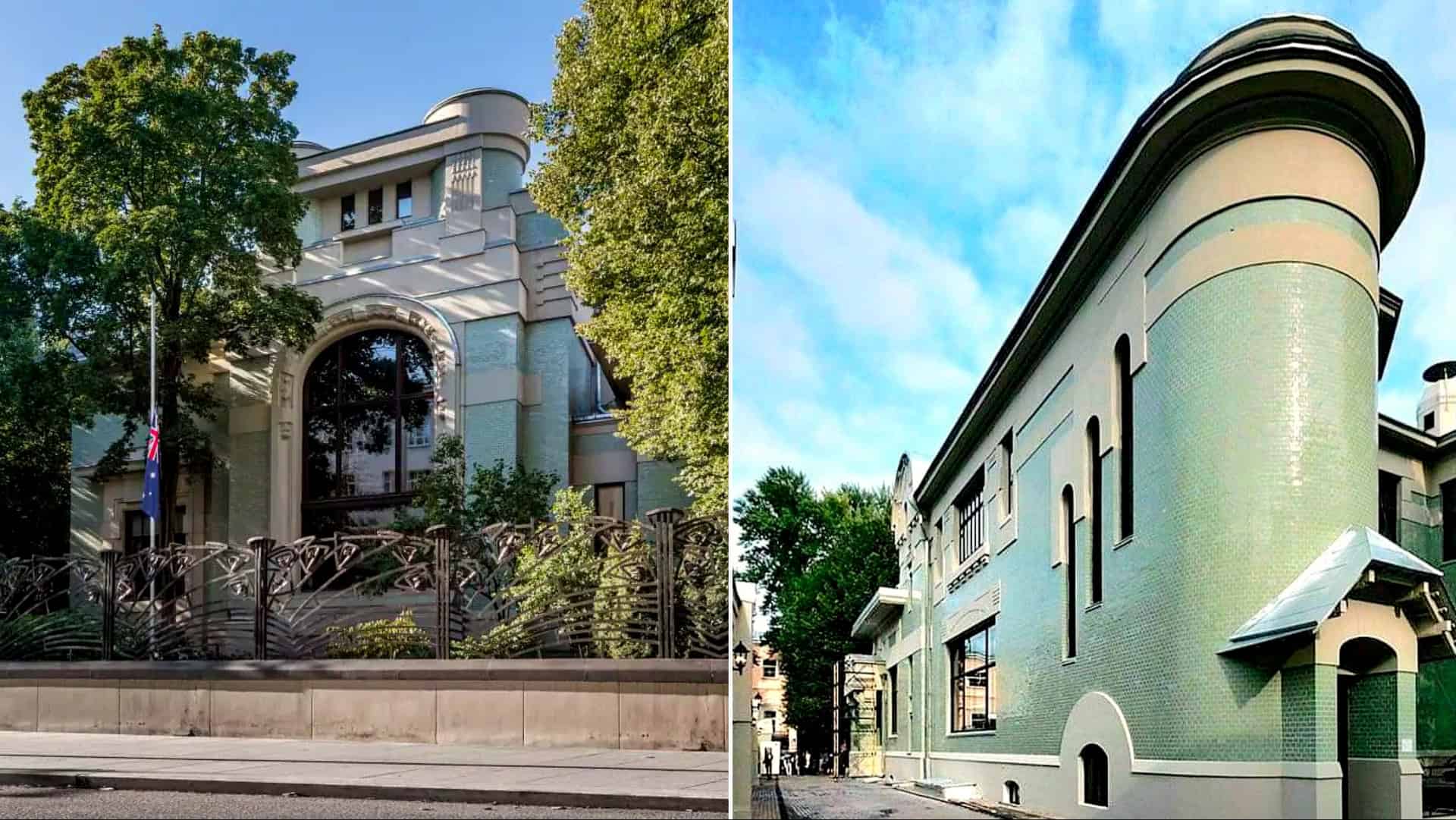Architect Franz Osipovich Schechtel created numerous remarkable projects, among which the Derozhinskaya Mansion in Moscow stands out.
Originally constructed in 1901–1902 for the daughter of a manufacturer, the mansion exemplifies Moscow modernism.
Now hosting the Australian Embassy, this historical residence blends history with artistic elegance.
1. Innovative Heating System
Radiators of modern design were ordered by Mrs. Derozhinskaya, offering a glimpse into the innovative spirit of the early 1900s.
The heating system was ahead of its time, providing both warmth and style. It’s a testament to modern engineering intertwined with art.
2. Unique Lighting Design
The mansion’s parlor boasts a ceiling lined with intricate floral designs, where light bulbs form the flowers’ cores.
This artistic lighting was extraordinary for its time, merging aesthetics with functionality and creating an enchanting ambiance.
3. Wooden Friso and Wallpapers
A wooden friso elegantly lines the top of the walls, complementing the changing wallpapers.
This detail, preserved for over a century, showcases Schechtel’s mastery in creating timeless interiors where art meets craftsmanship.
4. Tailor-made Furniture
The mansion’s furniture was meticulously crafted based on Schechtel’s designs.
Each piece adds to the bespoke charm, reflecting the aesthetic values of the time and offering a personal touch to the grand rooms.
5. Decorative Ceilings
The decorative ceilings in the front rooms stand as a hallmark of modernism, featuring intricate patterns that draw the eye upward.
These ceilings serve as both artistic canvases and architectural features.
6. Entresol Library
The entresol library, designed in harmony with the mansion’s overall aesthetic, features extensive wooden paneling.
This space fosters a tranquil atmosphere for reading and reflection, embodying the intellectual spirit of the era.
7. Glass Cabinet and Oak Cupboards
In the front dining-room, the original glass cabinet and oak cupboards remain intact.
These furnishings not only serve practical purposes but also reflect the enduring quality and beauty of the mansion’s design.
8. Grand Marble Mantelpiece
A striking white marble mantelpiece, reportedly the largest in Moscow, dominates the mansion’s great hall.
Its grandeur is matched by its craftsmanship, making it a central feature of the home’s design.
9. Architectural Ensemble and Fencing
The mansion, along with its surrounding fences and yard buildings, forms a cohesive architectural ensemble.
Together, they create a harmonious blend of art and architecture that defines the estate.
10. Historical Role in Diplomacy
Following the revolution, the mansion housed diplomatic missions, including the Norwegian plenipotentiary mission.
This historical role adds an intriguing layer to its legacy, intertwining politics with architectural splendor.











